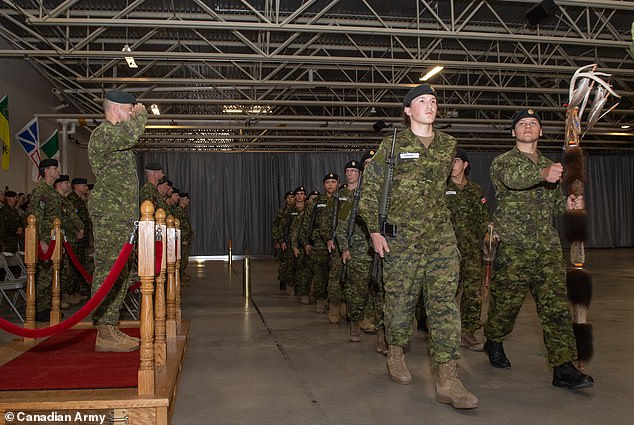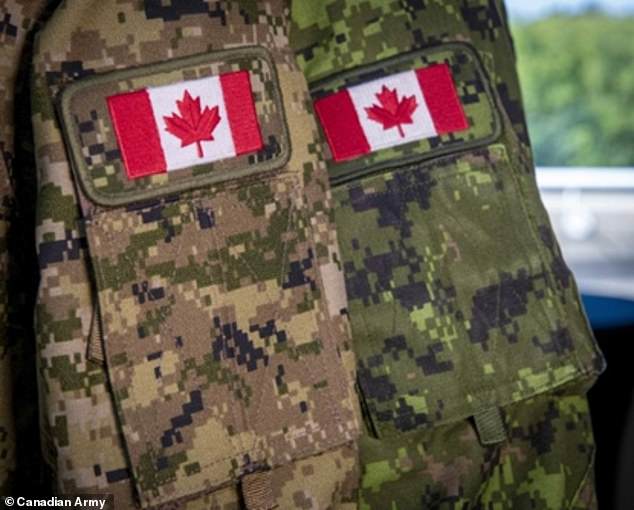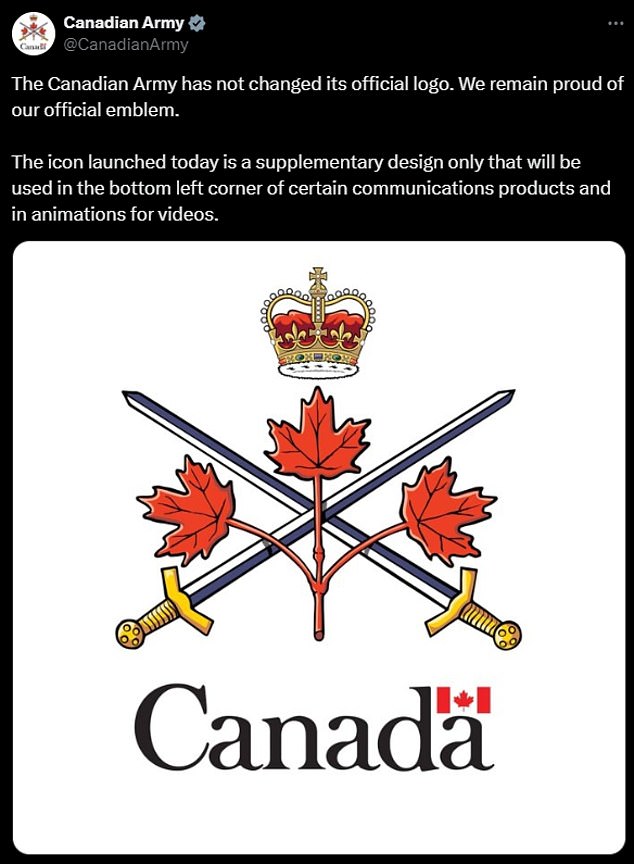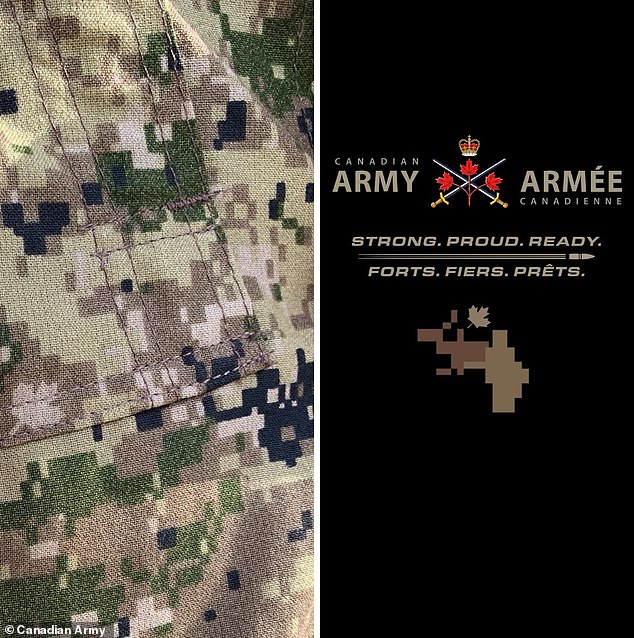A new Canadian military logo, widely ridiculed online for resembling a bear having sex with a moose, has been given the green light by top military brass without a single objection, according to leaked documents.
Approved in March 2024 and unveiled in May, the pixelated maple leaf design sparked a storm of criticism.
National Defense says the logo is a direct representation of the Army’s new camouflage pattern. It is composed of brown pixels arranged to form a maple leaf, taken directly from the pattern itself.
Social media erupted in mockery, comparing the logo to everything from a pile of feces to Minecraft graphics.
Online critics slammed the Army’s new logo, with some vehemently protesting what they believed was a replacement for the official emblem.
A new Canadian military logo, widely ridiculed on the Internet for resembling a bear having sex with a moose, was given the green light by top military brass without a single objection, according to leaked documents.

National Defense says the logo is a direct representation of the Army’s new camouflage pattern. It is composed of brown pixels arranged to form a maple leaf, taken directly from the pattern itself.
Following public backlash, the Canadian Armed Forces apologized for the confusion but defended the logo, stating that it was a complementary design and not a replacement for the official emblem.
But internal documents obtained by Ottawa Citizen reveal a carefully planned and executed initiative, approved by the army’s deputy commander and senior leadership.
The new logo was given the green light by the deputy commander of the army on March 21, 2024.
It underwent further review at a public affairs town hall before receiving final approval from top military brass on April 12. Remarkably, no concerns about the design were raised at any stage of the process.
However, internal documents stipulated strict usage guidelines, inexplicably prohibiting the logo from being rotated horizontally or vertically.
Amid the uproar, questions arose about the origin and approval of the logo, with some demanding that those responsible be fired.
Although opposition politicians accused the Liberal government of imposing the design, leaked documents reveal that it was an internal Army project.
Despite the controversy, the Canadian Armed Forces confirmed that the logo will continue to be used in various internal and external applications.
National Defence spokesman Alex Tétreault told the Ottawa Citizen that the new logo is in use.
“The icon design will be displayed in the bottom left corner of various internal and external products and presentations,” she said in an email to the Ottawa Citizen. “It will also be used in video animations and generated content for social media.

Social media erupted in mockery, comparing the logo to everything from a pile of feces to Minecraft graphics.

Following public backlash, the Canadian Armed Forces apologized for the confusion but defended the logo, stating that it was a complementary design and not a replacement for the official emblem.
The logo was one component of a broader Army rebranding effort aimed at “establishing and maintaining credibility,” according to the service’s May public affairs strategy written by then-commander Lt. Gen. Jocelyn Paul.
The Army has chosen not to conduct a post-mortem analysis to assess the deployment or understand the reasons behind the backlash, according to Tétreault.
While acknowledging that the logo was developed internally at no additional cost to contributors, Boudreau said the overall initiative was a failure.
“Failing to leverage lessons learned from initiatives like this to understand the positive and negative is an abdication of professional responsibility and a failure of senior leadership oversight of the communications function,” Boudreau said.
‘In the future, it essentially guarantees the repetition of bad processes, decisions, planning and results in similar initiatives.’

